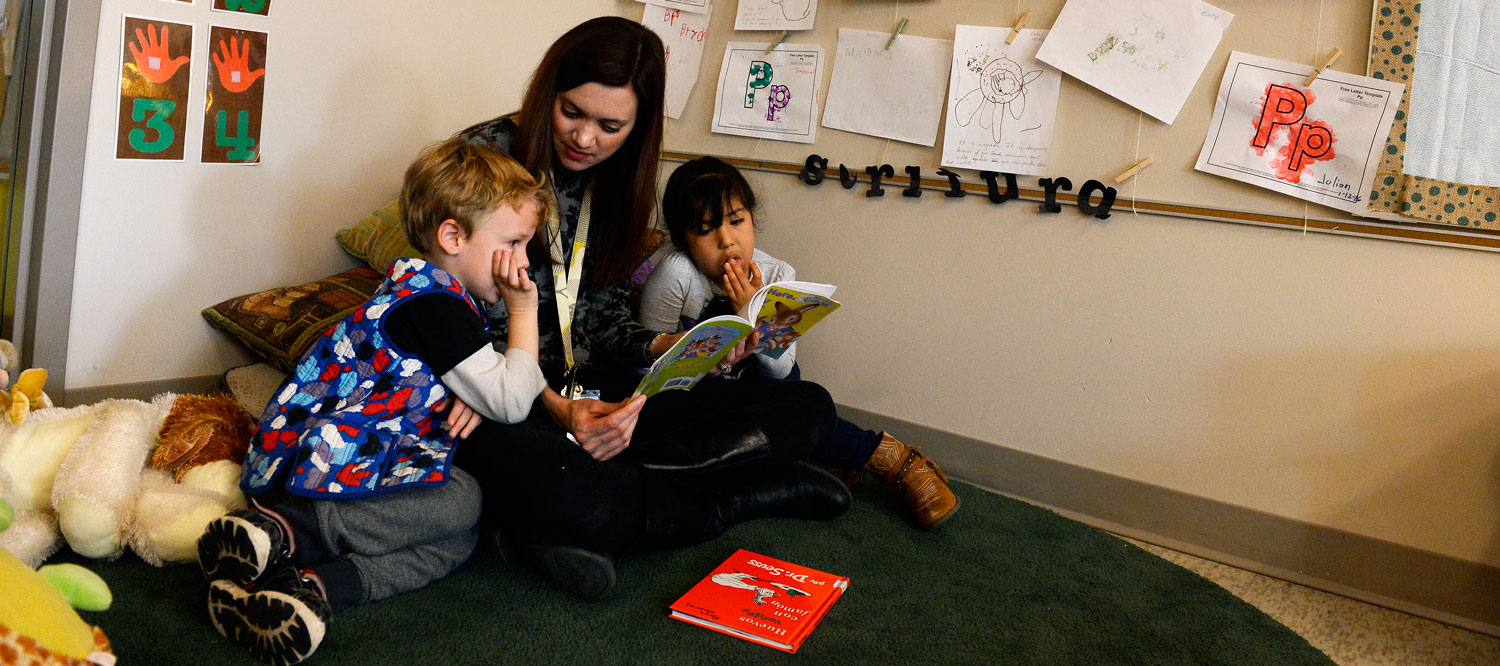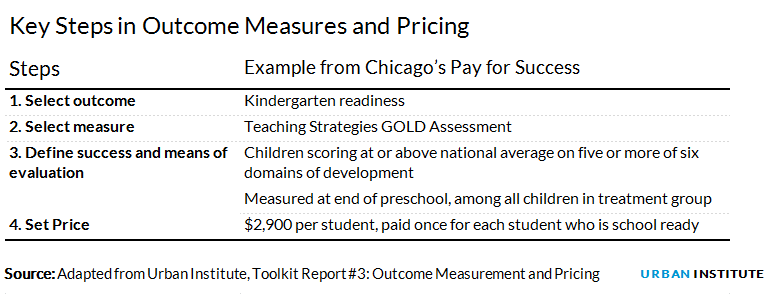
<p><em>Speech Therapist Leah Buchholtz, middle, reads to preschoolers Cohen Rose, 5, left, and Camila Najera, 5, right, during class at the Mapleton Early Childhood Center on March 30, 2016 in Boulder, Colorado. Photo by Helen H. Richardson/The Denver Post via Getty Images</em></p>
A version of this post also appeared on PFS Perspectives.
Most people agree that there is a social benefit to having children enter school with the foundational skills and behaviors to prepare them for success in kindergarten. Can that benefit be quantified? What’s a reasonable amount to pay for preschool programs that successfully improve children’s outcomes?
This is one of the questions facing local governments working to set up an early childhood pay for success (PFS) program. It is also one of the topics covered in Toolkit Report #3: Outcomes Measurement and Pricing, one of three papers released this week as part of the Pay for Success Early Childhood Education Toolkit—a collaborative effort between the Urban Institute’s Pay for Success Initiative, Urban experts, and external partners.
Placing a dollar value on outcomes of early childhood programs
One way to price outcomes is to consider the value of tangible costs avoided. Because children who participate in high-quality early education programs enter school with more skills, they are less likely to need special education and less likely to repeat a grade in school. The PFS early education project in Utah pays $2,600 per student for each year (up to seven years) the student avoids special education, based on the cost of special education for the district. This is similar to PFS projects in other realms, such as juvenile justice, where outcome payments have been based on avoided costs for prisons.
However, early childhood education (ECE) programs have a broad goal of promoting children’s overall healthy development or long-term success, not a narrow focus on reducing unnecessary special education use. It is important to think about the value of intangible economic benefits, which often accrue over the long term. For example, children who enter school with better preparation are more likely to be reading proficiently in third grade reading and graduate from high school, and high school graduates are more likely to have higher earnings as adults. One can consider this chain of evidence, and try to quantify the value of preschool programs based on future market earnings . Yet, doing so can be difficult.
One way that stakeholders may approach the challenge of setting prices is to ask, “How much are we willing to pay for a successful outcome?” and set a price on an outcome based on qualitative judgments about the social value of successful outcomes. This judgment may be informed by knowledge that there are large, long-term economic benefits to high-quality early childhood programs, without tying the value explicitly to any one long-term benefit.
Finally, as stakeholders work to place a dollar value on outcomes, it is important to recognize that prices per outcome must be high enough to result in total payment amounts that are acceptable to funders and low enough to be acceptable to governments or other outcome payers and to other key stakeholders.
Steps to selecting and pricing outcomes
Pricing outcomes is the fourth step outlined in the toolkit report. The three earlier steps involve selecting an outcome for success payments, an instrument to measure outcomes, and a means for defining and evaluating success (table 1). The Chicago ECE PFS model, for example, selected three outcomes, one of which was school readiness, and then selected an instrument already used in Chicago Public Schools (Teaching Strategies GOLD assessment) to measure school readiness, and defined children as “school-ready” if they scored at or above the national average on five or more domains in that assessment.

In Chicago, initial payments of $2,900 per child who was kindergarten-ready are to be followed by later payments for third-grade literacy outcomes and reduced use of special education. This package combined payments for outcomes with intangible economic benefits (school readiness and third-grade literacy) with payments for tangible avoided costs (the cost of special education).
For many ECE PFS projects, setting values on outcomes in PFS projects will involve considering and balancing multiple dimensions, including tangible costs avoided, intangible economic benefits, a judgment of the social value based on willingness to pay, and the economic viability of the project to the multiple stakeholders. As we stated in the toolkit, “Pricing outcomes is part science and grounded in evidence, but it is also part art.”
Let’s build a future where everyone, everywhere has the opportunity and power to thrive
Urban is more determined than ever to partner with changemakers to unlock opportunities that give people across the country a fair shot at reaching their fullest potential. Invest in Urban to power this type of work.